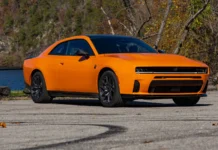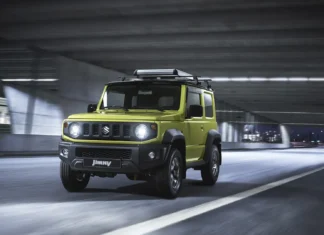
The Dodge Challenger Hellcat can take you for a wild ride if you’re not careful. Especially when you have 707 horsepower and 650 lb-ft of torque under your foot. Roasting the rubber is something any fool can execute, but can you tame that insane power into a 10-second ET? This is where Dodge’s Launch Control (LC) feature becomes an essential tool.
How does the driver engage Launch Control?
The first push of the ESC (electronic stability control) button puts the car into partial launch control. A second push engages full launch control mode and will confirm by displaying “Launch Control” on the center console display. Steering wheel must be straight and the Challenger must be on a level surface. If the car is more than five degrees on either lateral or longitudinal incline, the system will deactivate.
What engine rpm range does the Launch Control system operate?
With the manual transmission, the system allows the driver to select between 2,500 and 4,500 rpm in 250 rpm increments. The default setting is 3,750 rpm and was chosen by the SRT engineers after lots of testing. Lots and lots of testing.
LC behaves differently with an automatic transmission. The engine will rev to 1,825 rpm and will hold it there until the driver releases the brake pedal.
What are the optimal conditions for executing the perfect launch?
A dry surface with good grip is the best scenario since the system was developed the aim of providing the best possible traction. Anything with a little less grip and there will be some wheel slip until the system locks down to control that peak amount of acceleration.
What speed does Launch Control operate to?
The Launch Control system will limit slip up to 62 mph (100 kph). By the time you reach that speed, you should have enough grip to where LC isn’t needed any more.
Now that you know how Launch Control works, watch Roman as he tries to blaze off the line with and without using Launch Control.























